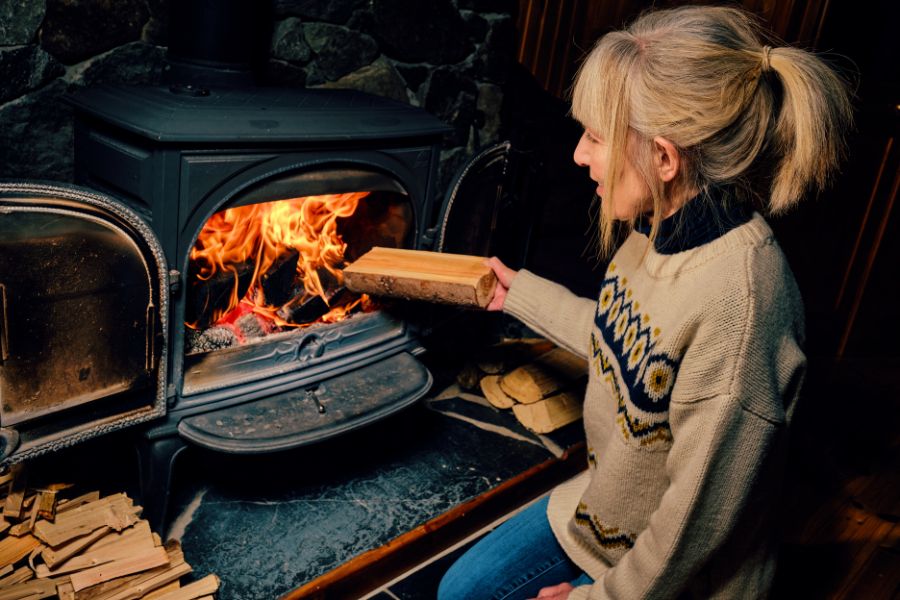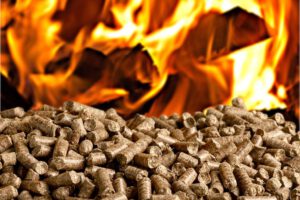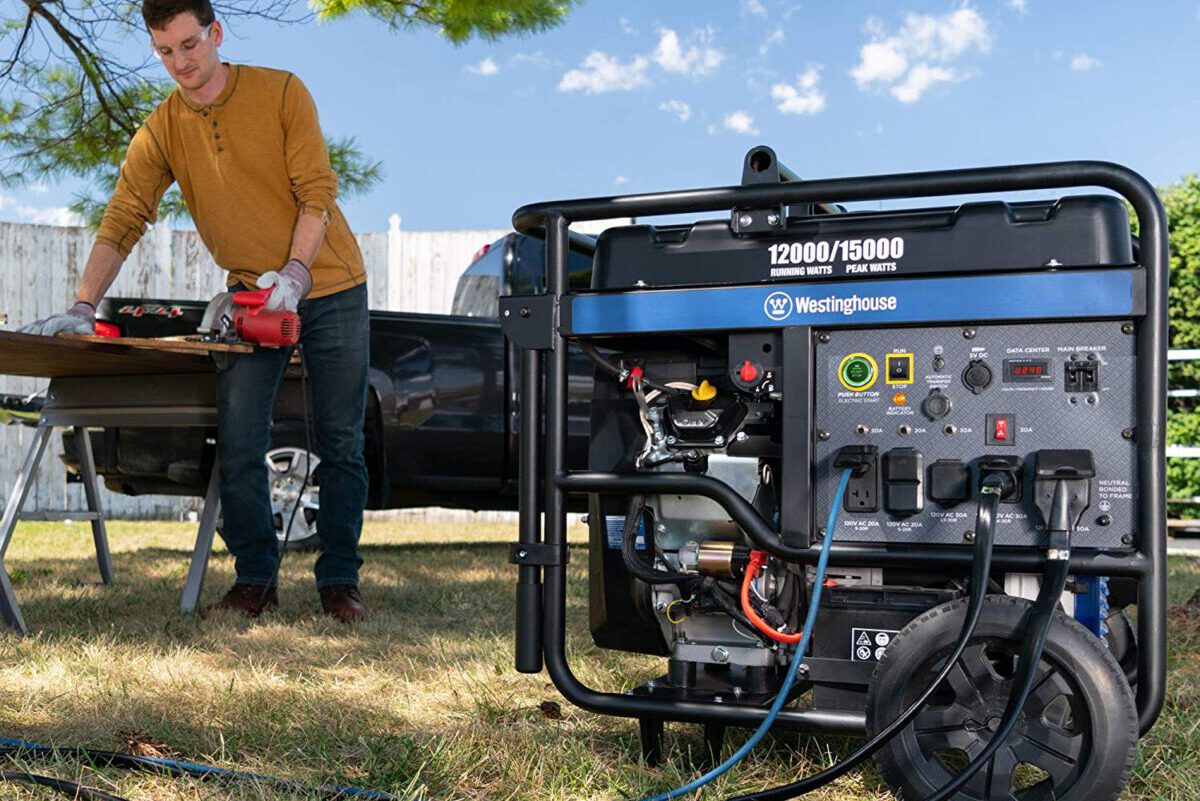Pellet Heater vs Wood Heater – Which is the Best?

When it comes to selecting a heating system for your home, the choice between a pellet heater vs wood heater is one that homeowners often grapple with. Both options have their unique attributes and drawbacks. Hence, the decision is a matter of matching your specific heating needs and preferences to the characteristics of each type of stove. We’ll make a detailed comparison of wood and pellet stoves, focusing on efficiency, cost, maintenance, environmental impact, and overall user experience. Speaking of environmental impacts, you can also learn about portable generators and solar panels in these guides.
So, whether you love the traditional appeal of a wood-burning stove or the modern convenience of a pellet stove, knowing the nuances of each will help you make an informed decision. Let’s help you make the perfect decision.
Overview of Pellet and Wood Heaters
Should you opt for a wood or pellet stove? Let’s find out below.
Pellet Stoves
Pellet stoves represent a more contemporary approach to home heating, offering a blend of efficiency and convenience. These stoves use compressed wood pellets as fuel, a byproduct of sawdust and wood waste. Therefore, they are an eco-friendly option.
The main attraction of a pellet fireplace lies in its automated features. Most models have automated feeding systems and thermostatic controls, allowing for a consistent and regulated heat output. This automation means pellet stoves may maintain a steady temperature, a significant advantage over traditional heating methods.
The design of pellet stoves also makes them relatively low-maintenance. They produce less ash and fewer emissions than wood-burning stoves. This translates into less frequent cleaning and a smaller environmental footprint. However, it’s important to note that pellet stoves require electricity to operate their mechanical components, which could be a drawback during power outages.
Wood Stoves
On the other hand, wood stoves are steeped in tradition and nostalgia. They use seasoned firewood as fuel, evoking the timeless image of a cozy home with the crackling sound of burning wood. Wood-burning stoves have been a staple in homes for centuries. As expected, they are appreciated for their robust heat output and the unique ambiance they create. These stoves require manual loading of firewood and regular adjustment to control the heat. This gives a more hands-on experience than pellet stoves.
While wood-burning stoves can be a more cost-effective option, especially if you have free or low-cost firewood, they demand more maintenance. You should consider regular cleaning of ash and soot and the need to manage and store firewood. Moreover, burning wood produces a lot of smoke and emissions. This means it’s less environmentally friendly than its pellet counterparts.
Fuel Type and Accessibility
Wood Stoves
Wrested for their traditional wood-burning charm, wood stoves utilize firewood as their primary fuel source. This classic approach to heating allows for using renewable resources like logs, which can be sourced from your property or purchased locally. The key to an efficient wood-burning stove is the use of seasoned firewood. That’s because poroperly dried and seasoned wood burns more efficiently. Plus, it produces more heat and less smoke, vital for environmental and health concerns.
The accessibility of firewood varies greatly depending on your geographical location. In rural areas, firewood might be abundant and inexpensive, but it may be costlier and harder to source in urban settings. Storage is another crucial aspect of using a wood stove. Firewood requires a significant amount of space and needs to be stored in a way that keeps it dry and easily accessible. This is a challenge, especially for those with limited outdoor space.
Pellet Stoves
Pellet stoves use a more modernized fuel in the form of wood pellets. These pellets come from compressed sawdust and other wood byproducts. Hence, they are a more eco-friendly option as they repurpose waste materials. Unlike traditional wood-burning stoves, most pellet stoves have an automated system for feeding the pellets into the combustion chamber. This makes it easier to operate and maintain a consistent temperature.
However, the accessibility of wood pellets is a concern. While they are widely available in many regions, in some areas, especially those far from pellet manufacturing plants, they can be less accessible and more expensive. Storage is less of a concern with wood pellets as they come in compact bags, which are easier to store and handle compared to logs. However, it’s essential to keep them dry to maintain their efficiency.
Installation and Initial Costs
The initial investment and installation costs for wood and pellet stoves vary significantly and are influenced by several factors, including the stove’s model, your home’s specific requirements, and installation regulations.
Wood Stoves
Installing a wood stove often involves more complex considerations compared to pellet stoves. Traditional wood-burning stoves typically require a dedicated chimney system for ventilation, which can add to the installation costs, especially if your home does not already have a suitable chimney. Additionally, the installation must adhere to local building codes and safety standards, which might necessitate professional installation and inspection.
The cost of purchasing a wood stove can vary, but generally, wood stoves produce a higher upfront expense due to their construction and the need for an extensive venting system. The long-term cost-effectiveness, however, can be significant if you have access to affordable or free firewood.
Pellet Stoves
Pellet stoves, in contrast, are often less expensive to install. Many models are designed with a direct-vent system, which does not require the traditional chimney setup that wood stoves do. This can lead to a lower initial installation cost. Additionally, the design of most pellet stoves is geared towards easier integration into existing homes, which can reduce installation complexities and costs.
While the stove can be more expensive than a basic wood burner, the simpler venting requirements can offset the installation cost. Moreover, the long-term savings in fuel costs, particularly if wood pellets are readily available at a competitive price in your area, can make pellet stoves a cost-effective option over time.

Operational Efficiency and Heat Output
Wood Burning Stoves
Wood-burning stoves have long been celebrated for their ability to provide robust and comforting heat. The efficiency of a wood-burning appliance largely depends on the type of wood used, the design of the stove, and how well it’s maintained. Properly seasoned firewood and wood pellets are crucial for efficient combustion. The heat output from a wood fire can vary based on the stove’s design and the wood fuel quality. High-quality wood stoves, especially newer models, have improved efficiency and heat distribution.
One of the key factors affecting the operational efficiency of wood stoves is the design of the combustion chamber. Modern wood-burning stoves are designed to maximize heat output while minimizing waste, but they still require manual effort to control the burn rate and maintain consistent heat. In a power outage, wood stoves continue to operate effectively, which can be a significant advantage in certain regions.
Pellet Stoves
Pellet stoves stand out for their operational efficiency and ease of use. These stoves burn pellet fuel from compressed wood waste, offering a more consistent and controlled burn than traditional wood-burning fireplaces. The efficiency of pellet stoves is also due to the mechanical feeding of pellets into the burn pot and the precise control over the combustion process.
Most pellet stoves have a thermostat and an automated pellet feed system that ensures a steady and consistent heat output. This automation allows for better temperature control and a more efficient burning process. However, it’s important to note that pellet stoves require electricity to operate these systems. Thus, in a power outage, unless the stove has a backup power source, it will not function.
Maintenance and Upkeep
Wood Stoves
Maintenance is a significant aspect of owning a wood-burning stove. Regular cleaning of the combustion chamber and the flue is essential to ensure efficient operation and prevent the buildup of creosote, which can pose a fire hazard. Wood stoves, especially freestanding models and wood inserts, often require an insulated chimney system, which also needs regular inspection and cleaning.
The storage and preparation of firewood also add to the maintenance tasks. Wood needs to be cut, split, dried, and stored properly, which can be labor-intensive. For those who enjoy the process and can source wood, this might not be a drawback, but it might be a significant consideration for others.
Pellet Stoves
Pellet stoves are generally easier to maintain than wood stoves. The pellet fuel burns cleaner, producing less ash and creosote. This means the stove and its venting system don’t require cleaning as often. The maintenance mainly involves regular cleaning of the burn pot and the ashtray, along with occasional checks of the electrical components and the pellet feed system.
Despite being less labor-intensive, pellet stoves still require a steady supply of fuel, which must be stored in a dry place. The reliance on electricity also means that pellet stoves can be less reliable during power outages unless equipped with a backup power source.
Bottom Line
Choosing wood and pellet stoves will ultimately depend on individual heating needs, preferences, and lifestyle. Whether you lean towards the traditional charm of a wood-burning stove or the modern convenience of a pellet stove, both options provide effective and cozy home heating solutions.



